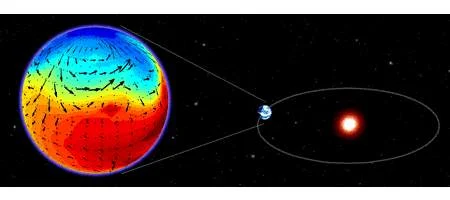Scientists from the Institut Pierre Simon Laplace in Paris say they’ve confirmed that the Gliese 581d exoplanet could support Earth-like life.

The red dwarf star Gliese 581 has already been widely studied, after two planets were detected in 2007 orbiting not far from the inner and outer edge of its habitable zone.
Gliese 581d is a long way from its sun, and was initially believed to be too cold for life, while the closer-in planet was thought to be potentially habitable. However, atmospheric scientists later showed that any liquid oceans would rapidly evaporate in a ‘runaway greenhouse’ effect.
A third possibility, Gliese 581g, emerged late last year. It was believed to have a mass similar to the Earth’s, and was close to the centre of the habitable zone. However, much doubt has since been cast on this theory, with some now believing that it may not exist at all.
Instead, it could simply be a result of noise in the measurements of stellar ‘wobble’ used to detect exoplanets.
https://www.tgdaily.com/space-features/51790-first-truly-habitable-
exoplanet-found
But now, Gliese 581d is back in the running, despite the fact that it has a mass at least seven times that of Earth, and is around twice its size. It also receives less than a third of the stellar energy Earth does and may be tidally locked, with a permanent day and night side.
This could mean that any atmosphere thick enough to keep the planet warm would become cold enough on the night side to freeze out entirely, ruining any prospects for a habitable climate.
But the IPSL scientists developed a new computer model that simulates a much wider range of conditions than previously possible, including any atmospheric cocktail of gases, clouds and aerosols.
To their surprise, they found that with a dense carbon dioxide atmosphere – a likely scenario on such a large planet – the climate of Gliese 581d is not only stable against collapse, but warm enough to have oceans, clouds and rainfall.
The daylight heating was efficiently redistributed across the planet by the atmosphere, preventing atmospheric collapse on the night side or at the poles.
At 20 light years from Earth, Gliese 581d is one of our closest galactic neighbours – although a spacecraft like Voyager 1 would still take over 300,000 years to arrive there.






